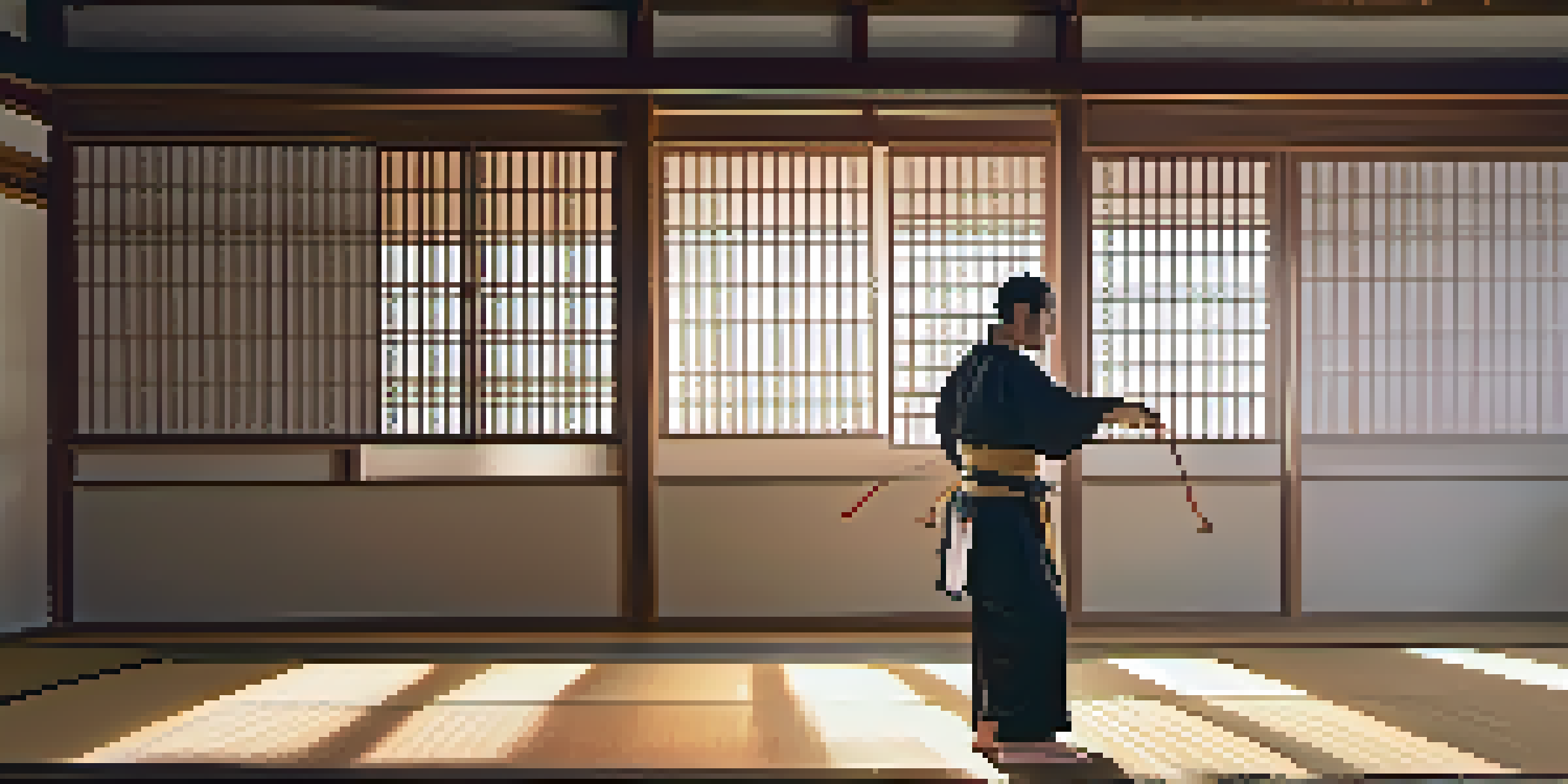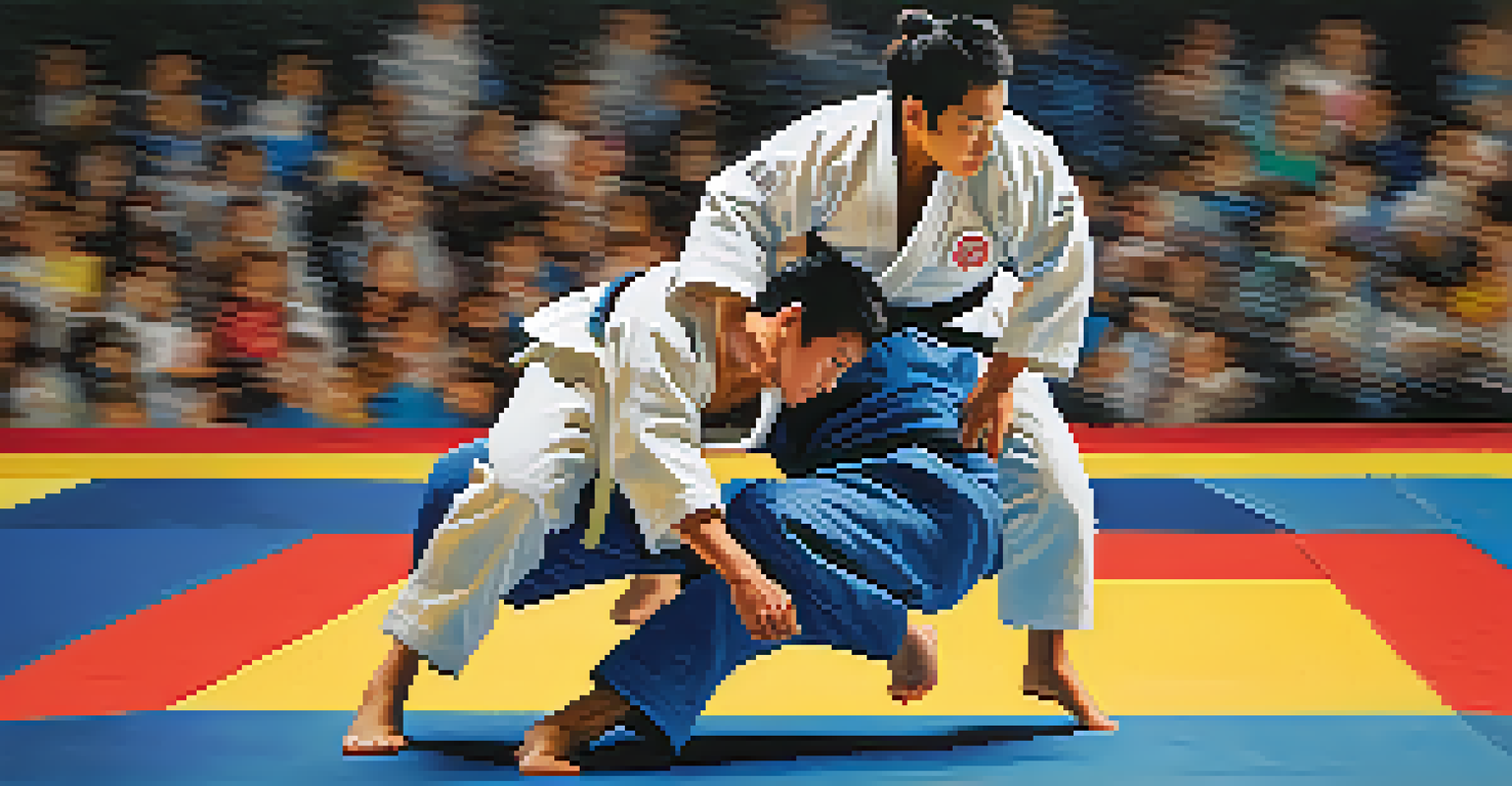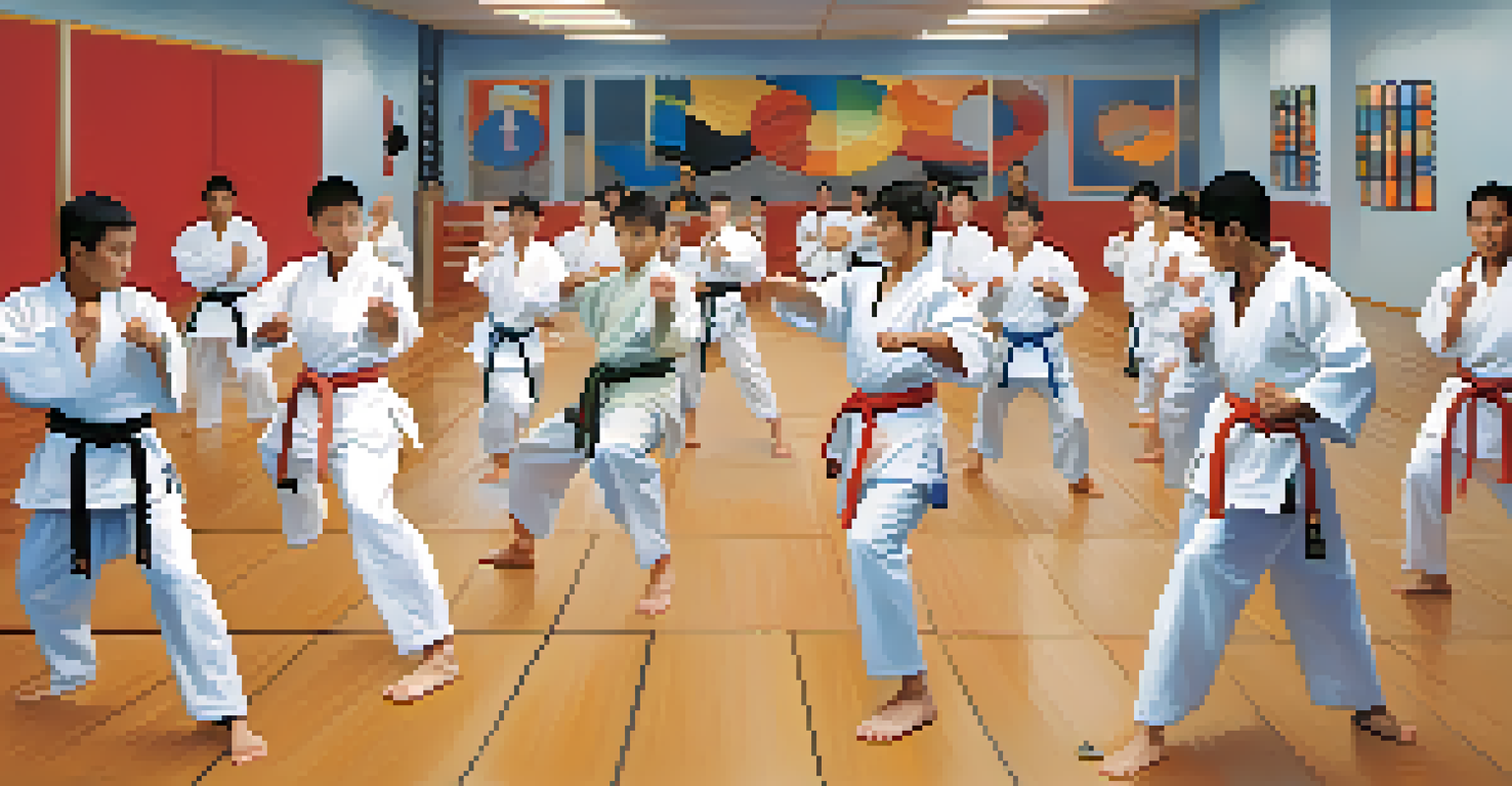The Spread of Martial Arts to the Western World

Ancient Roots: The Origins of Martial Arts in Asia
Martial arts have a rich history that dates back thousands of years, primarily in Asia. Styles like Kung Fu and Judo developed as methods of combat, self-defense, and discipline. These ancient practices were not just about fighting; they also encompassed philosophy, tradition, and cultural identity, making them integral to the societies that birthed them.
Martial arts are a way of life, a practice that not only strengthens the body but also enriches the soul.
As these martial arts evolved, they began to incorporate elements of spirituality and personal growth, attracting practitioners looking for more than just physical prowess. This blend of discipline and philosophy laid the groundwork for martial arts to transcend mere combat techniques, appealing to a broader audience.
Throughout the centuries, many masters traveled across regions, sharing their knowledge. This exchange of ideas and techniques started the gradual journey of martial arts beyond their native lands.
The Initial Encounter: Western Interest in Martial Arts
The first significant wave of interest in martial arts in the West can be traced back to the 19th century. As Western explorers and scholars ventured into Asia, they encountered these fascinating combat styles. This curiosity was fueled by a growing fascination with Eastern cultures, often romanticized in literature and art.

Martial arts began to appear in exhibitions and demonstrations, capturing the attention of the public. These events showcased not only the physical skills of martial artists but also the cultural richness behind each style. The allure of the exotic and the promise of personal empowerment enticed many to explore these practices further.
Martial Arts' Rich Historical Roots
Martial arts originated in Asia thousands of years ago, integrating combat techniques with philosophy and cultural identity.
This initial encounter laid the groundwork for a cultural exchange, sparking interest in learning these disciplines and the philosophies that accompanied them.
The Rise of Judo and Karate in the Early 20th Century
In the early 20th century, Judo and Karate became the most prominent martial arts introduced to the Western world. Judo, with its emphasis on technique and leverage, was particularly appealing to Western audiences, leading to its rapid adoption. The first Judo school was established in the United States in 1900, signaling a significant milestone in martial arts history.
The ultimate aim of martial arts is not having to use them.
Karate followed closely, thanks to its introduction in Hawaii in the 1940s. The accessibility of Karate training and its focus on self-defense resonated with many individuals seeking empowerment. Its popularity surged after being showcased in films and television, igniting interest in martial arts as a whole.
This era marked the beginning of martial arts schools popping up across America and Europe, inviting individuals from all walks of life to join.
Hollywood's Influence: Martial Arts in Film and Media
Hollywood played a pivotal role in popularizing martial arts in the West, particularly in the 1970s. Films starring Bruce Lee, such as 'Enter the Dragon,' captivated audiences with their stunning choreography and intense storylines. This not only showcased martial arts as an exciting form of entertainment but also piqued interest in learning these skills.
The success of martial arts films led to a surge in the establishment of martial arts schools, with eager students wanting to emulate their on-screen heroes. Action stars like Chuck Norris and Jean-Claude Van Damme further propelled this trend, blending martial arts with mainstream cinema and making them household names.
Western Fascination and Adoption
The 19th and 20th centuries saw a surge of Western interest in martial arts, driven by exploration, cinema, and the desire for personal empowerment.
As martial arts became more visible in popular culture, they continued to attract diverse practitioners, contributing to a cultural phenomenon that transcended borders.
The Evolution of Martial Arts Styles in the West
As martial arts gained popularity in the West, various styles began to adapt and evolve. Traditional practices were often blended with modern techniques, leading to the emergence of new hybrid styles. For instance, Brazilian Jiu-Jitsu combined elements of traditional Japanese Jiu-Jitsu with new grappling techniques, creating a unique approach that appealed to many.
The creation of Mixed Martial Arts (MMA) in the late 20th century further illustrated this evolution. MMA incorporated techniques from multiple disciplines, allowing fighters to showcase their skills in a competitive format. This hybrid approach attracted a diverse audience and brought martial arts into the realm of professional sports.
The evolution of martial arts in the West has made them more accessible, appealing to a broader demographic and fostering a community of practitioners committed to personal growth and fitness.
Martial Arts as a Path to Wellness and Self-Improvement
Today, martial arts are recognized not only for their combat effectiveness but also for their benefits to mental and physical health. Practitioners often report increased confidence, discipline, and focus, along with improved fitness levels. This holistic approach has made martial arts a popular choice for individuals seeking a comprehensive workout and personal development.
Many schools now emphasize the mental aspects of martial arts, teaching mindfulness and stress relief techniques alongside physical training. This shift in focus has attracted individuals looking for ways to enhance their well-being, making martial arts a valuable resource in today’s fast-paced world.
Martial Arts as a Wellness Journey
Today, martial arts are celebrated for their mental and physical health benefits, promoting personal growth alongside combat skills.
By integrating self-improvement with physical fitness, martial arts have found a lasting place in Western society, fostering a sense of community and belonging among practitioners.
The Future of Martial Arts in a Globalized World
As the world becomes increasingly interconnected, the future of martial arts seems promising. Globalization has facilitated the exchange of knowledge, leading to a greater understanding and appreciation of diverse martial arts styles. Online platforms and social media have also allowed practitioners to share techniques and experiences, broadening the reach of martial arts.
The continued popularity of martial arts competitions, such as the UFC, showcases the universal appeal of these disciplines. With increased visibility, martial arts are likely to attract new generations of practitioners eager to learn and grow.

Ultimately, martial arts will continue to adapt and evolve, blending tradition with modernity while fostering a spirit of respect and cultural appreciation across the globe.